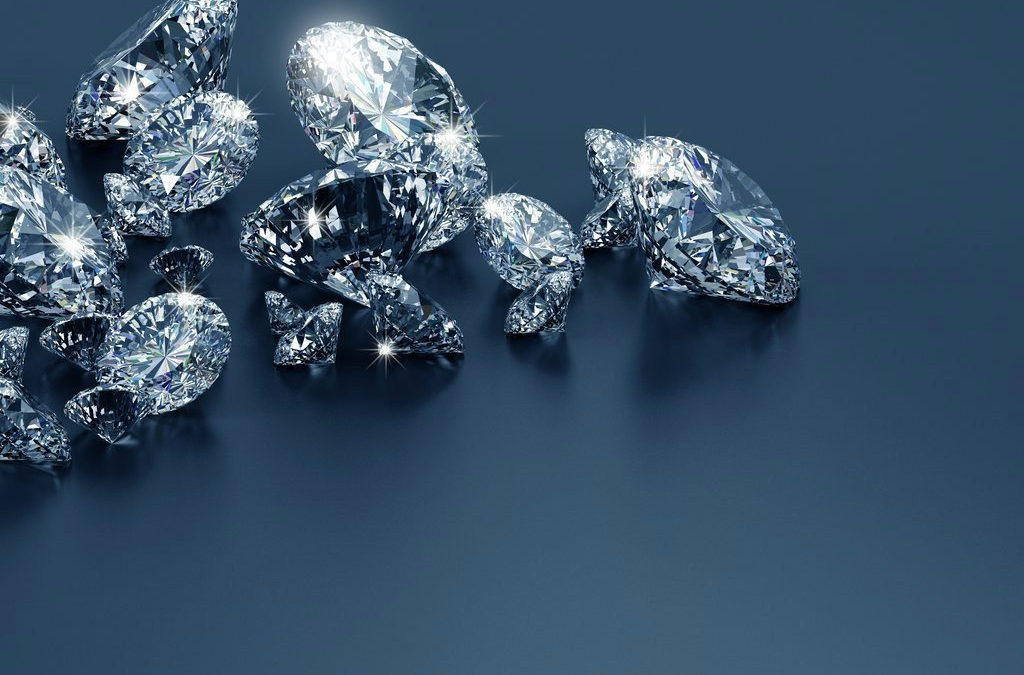I am sure by now you may have noticed #labgrowndiamond trending in your social media network feeds and you may be wondering what the Lab-Grown Diamond craze is all about. Well, for starters, Diamonds have been desired and revered for centuries. The brilliance. The fire. The sparkle. No other gemstone on Earth compares. Well, what if I told you we could grow these coveted stones in a laboratory?
The Chatham Lab-Grown Process
Our company Chatham uses two methods of diamond growth: Chemical Vapor Deposition (CVD) and High Pressure, High Temperature (HPHT). By duplicating the conditions deep within the earth: the temperature, the pressure and chemical makeup, we can successfully grow Diamonds in about a month.
Chatham laser inscribes all of our lab-grown Diamonds and each one comes with a Certificate of Authenticity and Grading Report. We are the architects of the gem growing industry. Our research laboratories grow, cut and carefully examine each diamond before it leaves the facility.

We also include the Growth Year of your lab-grown Diamond. That means you can set your ring with a Diamond that was harvested at the time you and your partner met. Only Chatham offers you a Diamond that grew while your love for each other was growing, so you can mark this special moment in your life forever.
Interested in locating a Chatham Diamond? You can search our Lab-Grown Diamond Inventory List and we’ll refer you to an authorized Chatham Diamond Dealer near you!
You can read more about the science here.
Mined Diamonds Versus Lab-Grown Diamonds
So now you’re wondering what the difference is between a mined Diamond and a lab-grown Diamond, right? Simply put, the only difference between a mined and a lab-grown Diamond is where they form. The mined Diamond forms below the ground versus the lab-grown Diamond, which forms above the ground. Lab-grown Diamonds are identical physically, optically and chemically as their mined counterparts.

Price also plays a major role in the difference between the two. Lab-grown Diamonds are more affordable than mined. Cost savings can be anywhere from 30-80% depending on the quality. As the weight and quality of the lab-grown Diamond increases, so does the price difference.
Myth Versus Reality
Anytime there is something new and different in the market, it’s joined by skepticism and resistance. There are many myths and misconceptions floating around about lab-grown Diamonds. It’s time to clear them up.
Just because there are cost savings, that doesn’t mean that it is inexpensive to grow. On the contrary, the presses used to duplicate these conditions cost anywhere from around $500K to a million each! The process is highly complex and expensive.
The same can be said about the instrumentation used to detect a lab-grown from a mined. Even a trained gemologist cannot tell the difference between a mined Diamond and a lab-grown just by using a loupe. Gemological institutes have high price-tagged devices that are able to observe the Diamond’s reaction to UV radiation. Sometimes even more advanced testing is required.

Another misconception is that lab-grown Diamonds have no intrinsic value. There can be nothing farther from the truth. Chatham has been growing colored gemstones for 80 years. Our stones have only increased in value. A lab-grown Diamond is identical to its mined counterpart. As long as there is value in the product itself – Diamond – the same holds true for lab-grown.
Simulant Versus Lab-Grown Diamond
You will also hear terms like synthetic and simulant to describe a lab-grown Diamond. By scientific standards, the technical term for a lab-grown Diamond is synthetic; it is made by chemical synthesis to replicate its mined counterpart. But man has distorted the use of the word synthetic making it synonymous with the term “fake.” This is a misnomer and a misrepresentation of a lab-grown Diamond. It’s like saying a test tube baby is synthetic and not a real baby.
The term simulant is also misleading. A simulant is a product used to resemble something else, but it does not share any of the same chemical or physical properties. A CZ or a moissanite is a Diamond simulant. They are used to imitate a Diamond, but they do not possess the chemical makeup of a Diamond. Therefore, a lab-grown Diamond cannot be defined as a simulant.
Learn More About Lab-Grown Terminology Here.
Our advice to you is if you are shopping for a lab-grown Diamond, make sure you have done your research. Look for a reputable brand that is proud to stand behind their product.
Here is a list of Retailers that we have partnered with to help educate consumers about lab-grown Diamonds and gemstones who also carry a variety of our products.
